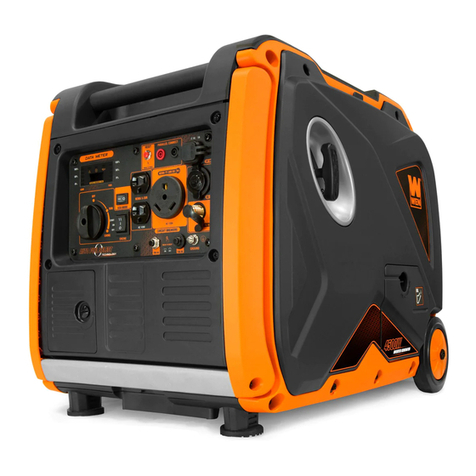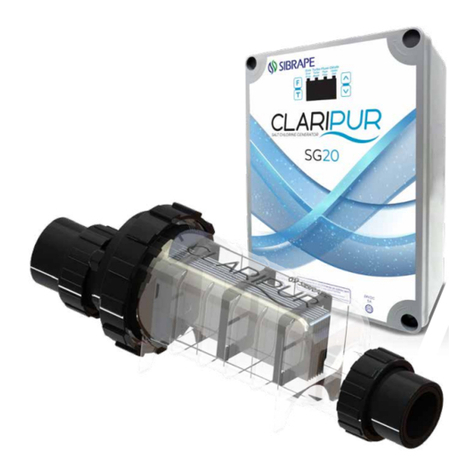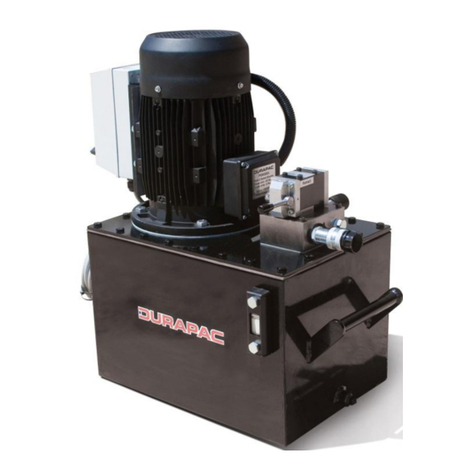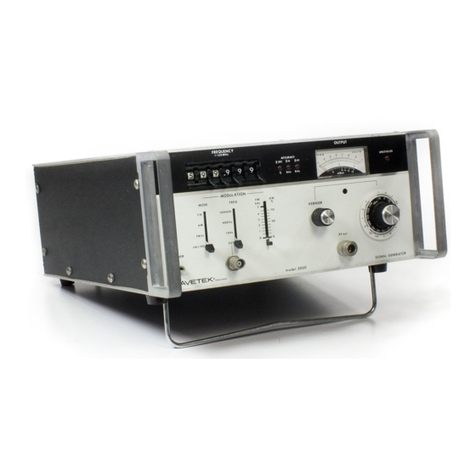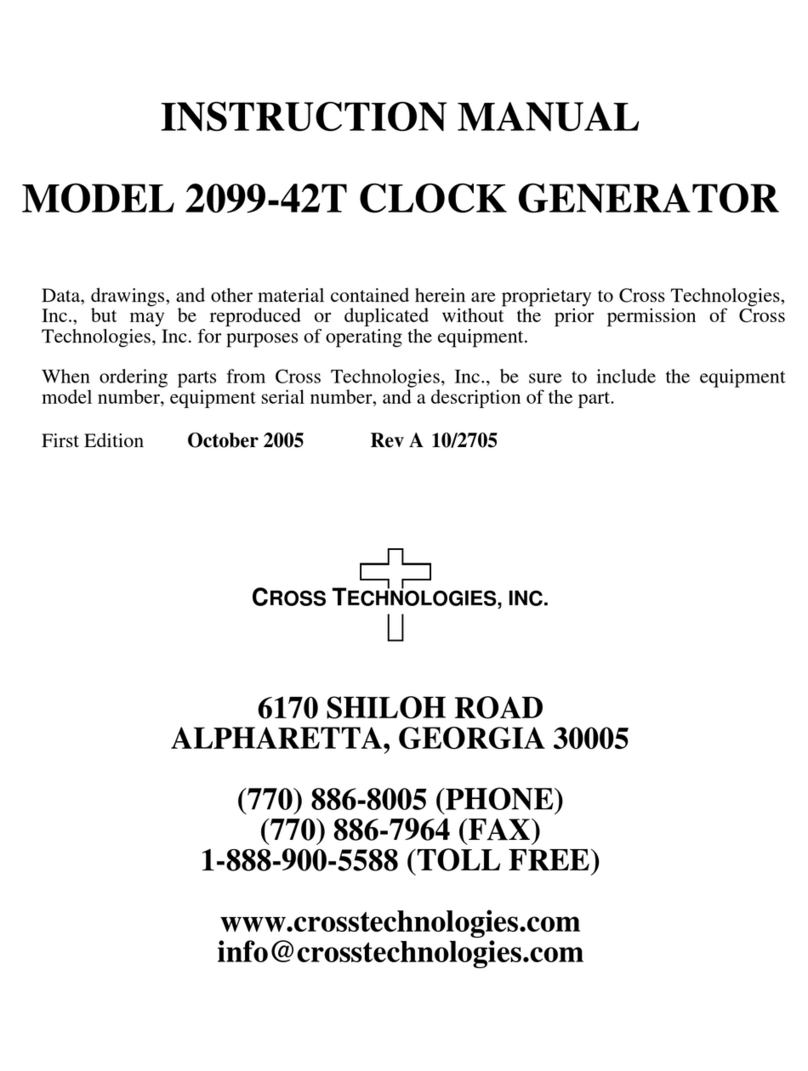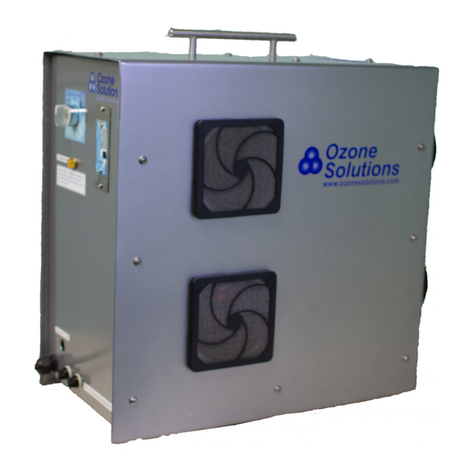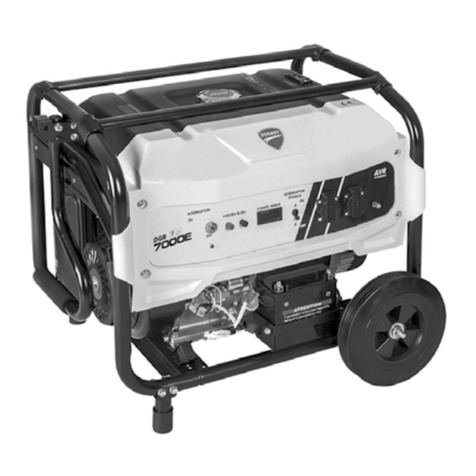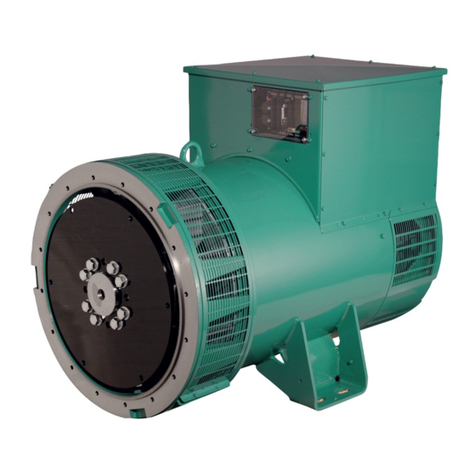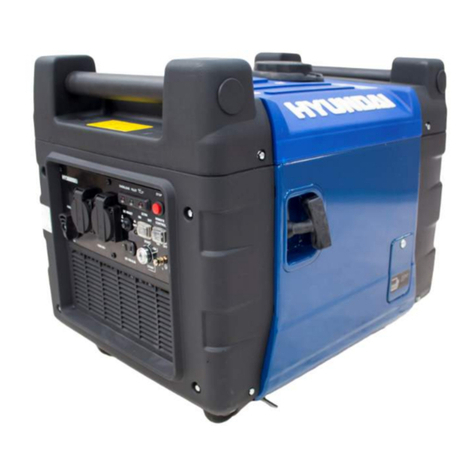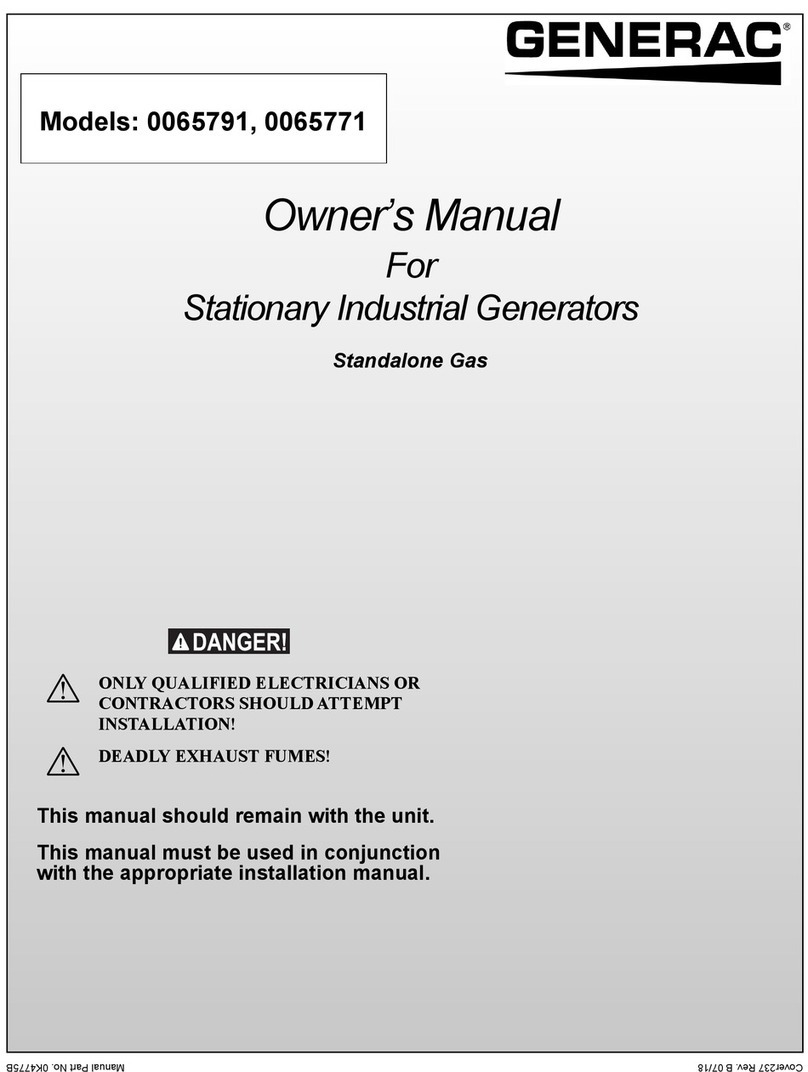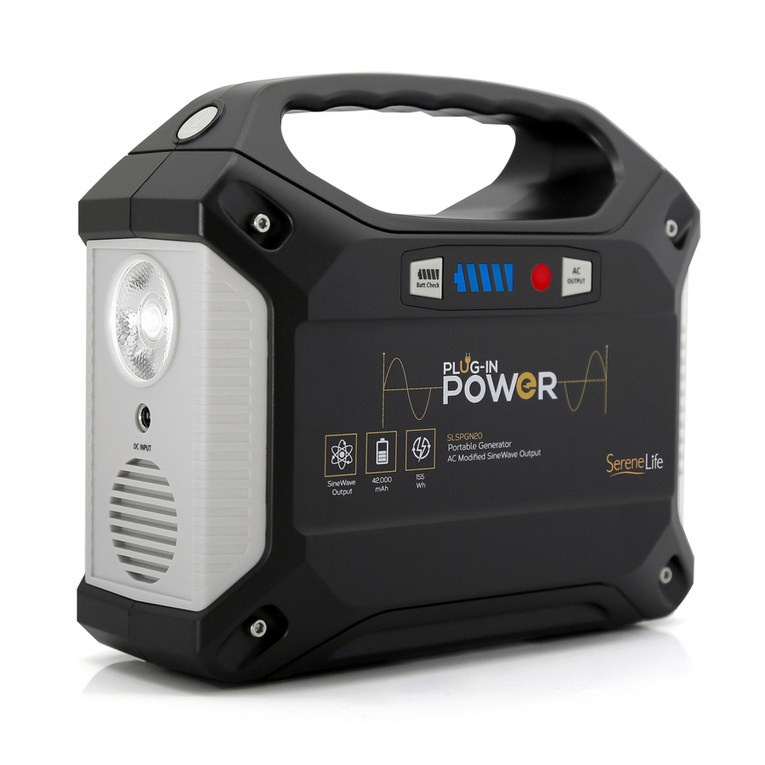HPE 606A Owner's manual

|
xe
AARC
RR
SEES
NNER
NTRS
NTN
SENSE
BERS
AM
USSSA
BPEL
SB
CO
OA
LCE
WN
VS
ES
SH
CRSA
ALT
PEEP
TES
URRA
LIT
LANES
TE
ES
PENTA
KETENE
EDT
ESPACE
ERT,
PCT,
4
~
ty
We
\
|
we
se
AY
‘As~
SES
We
.
WY
x
te
~
SS
f
.
iG
AS
A
Ay
)
aN
\Y'
RS
aS
m4
4
4
606A
HIGH
FREQUENCY
SIGNAL
GENERATOR
SERIALS
PREFIXED:
009-
Say
Ve
+)
~
SS
ah
te
ike
WS
WS
mi
es
>
sx
J
wy
WSS
{
SRS
a
AY
~~
ir
tg
NG
x
S
;
4
'.
or
We
fF
NS
NOW
<
D
INS
ah
oy
—
.
Vit
‘TA
‘
~
Shee
%,
ee
-
ate
As
\
3)
Rt
~
rN
~\
yl
mS
SS
}
WS
~
¢
My
coe
x
ENS
is
t
ee
>
2
!
BD.
fal
,
pass
ARN
ieee
te
Hare!
Be
we
At
Sees,
2
SY
DSS
JARS
a
Ss
ERS
ATTEN
x
INS
SS
Ne
ws
Sapad
NS
=)
=
NEM
E
<3
.
BR
:
;
oS
:
WARD
YAL:
San
i
reeqteths
;
>
Sac
=
:
Mer
=
(
:
Nn
eS
Wat
SYS
ANS
SNS
tis
.
St
LAP
.
=<)
Sal
ee
Pate:
_
SNRESAAOA7
ES
OTUCANA
3S
USDA
SASS
ARS
TSE
ECD
NWA
ESSN
VCH
APO
EAA
EN
RR
ESSENCES
SPIT
TENS
BAAS
SALE
NS
RPGR
NIETASEN
HT
NO
a
S
~
SUF:
ies
oS
Ne
(Sie
WG)
Swe
SS
WS
oS
SNS
SR
SSE
7,
SSDS
BESS
3
SS
*
=
SS
\
ws
=
YS
ion)
PAS
SS
5,
S
y
“
x
=~
SO
Y;
s
OPERATING
AND
SERVICING
MANUAL
if
|
|
t
i
1
i
MG;
ANS
)
YE
LN
ray
pees
vi
ANS
™~
as
<a
RRS
eas
AN,
rR
7h
‘
athe
Choy
Tiss
Oe
wey,
Ke
aN
SS:
aj
RS
iS
f)
Ay
4
AT
AE
.
NS
RN
x
Ms
SS
sy;
45
Nv
——y)\
wy
=
hee)
y
Pay
LS
r~
>
are
Vast.
His
iS
oe
4
we
LANG
ER
Tre
a)
SS
Ae
Ley
aye
ROK
ROR
rf
,
oS
AAS
SOME
oA
SS
ARENA)
re
ajay
WES
aaa
¥4
iS
s\
>
»
Ra
TONE
Lie
WHE
es
SS
RS
BN
yy
-
eS
4
C3
RS
ie
SSA
SS
nN
SS
NS
4
yell
RS
3
+
«
i
Ee
8
oe
he
\
UG
S
r
a
ue
x
iS
fy
7
S
=
a
=)
iS
Ve
Kr
my
EN
ay
AY
=e
NOSE
WSE,
BN
aN
~
SS
uy
a;
as
SSI
ait
al
ac)
.
Pk!
«\
=
a
TREN
ian
bad
Set
.
afi
=
\
q
~
WN
ANN,
i
|
WEG

ee
aunts
Model
606A
Figure
4-1]
OUTPUT
60d6
/0d6
CAM
PROFILES*
NOTES:
oaks
MICROSWITCH;
SHOWN
IN
%
PICTORIAL
REPRESENTATION:
}
NORMAL
(UNOPERATED)
DO
NOT
SCALE.
Ro
CONDITION,
RESISTANCE
IN
OHMS
t
4
9
-----
SWITCHES
GANGED
Figure
4-11,
Model]
606A
Output
Attenuator
4-22
00170.

OP
ERATING
AND
SERVICING
MANUAL
MODEL
606A
HIGH
FREQUENCY
SIGNAL
GENERATOR
SERIALS
PREFIXED:
009-
FREQUENCY
ining,
P
30
“e,
~
PERCEN?,
MODULATION
.
acces
thy
excene
fomc-asMc—
BBMC39.2MC—"
L76mMc-60MC——"
‘
530KG-1800KC——
:
1e5KC-560K0-———"
MODULATION
AMPLITUDE
'
VERNIER
MODULATION,
SELERTOR
ATTENUATOR
on;
7000-50
SOKC-7OKE
se
moor
0
300
~60
oo
~70
so
80
1
-90
3.
~100
|
|
1-10
MODULATION
GRYSTAL
CALIBRATOR
IMPUT-OUTPUT
PHONES
ort
SiGNAL
GENERATOR
606A
:
‘
wy
MODEL
~
WeWeTT
)
PACKARD
tEWLET,
AY
caLironnn
Cop
right
HEWLETT-P
]
.
Printed
3/60

Model
606A
SPECIFICATIONS
FREQUENCY
RANGE:
50
ke
to
65
mc
in
6
bands.
50
-
170
kc
1.7
165
-
560kc
5.8
-
19.2
mc
530
-
1800
kc
9.0
FREQUENCY
ACCURACY:
Within
+1%.
FREQUENCY
CALIBRATOR:
Crystal
oscillator
provides
check
points
at
100
kc
(useful
to
6
mc)
and
1
mc
intervals,
accurate
within
0.01%
from
0°to
50°C,
RF
OUTPUT
LEVEL:
Continuously
adjustable
from
0.1
pv
to
3
volts
into
a
50
ohm
resistive
load.
Calibration
is
in
volts
and
dbm
(0
dbm
is
1
milliwatt).
OUTPUT
ACCURACY:
Within
+1
db
into
50
ohm
resistive
load.
FREQUENCY
RESPONSE:
Within
+1
db
into
50
ohm
resistive
load
over
entire
fre-
quency
range
at
any
output
level
setting.
OUTPUT
IMPEDANCE:
50
ohms,
swr
less
than
1.1
on
0.3
volt
range;
on
1
volt
and
3
volt
ranges,
less
than
1.1
to
20
mc
and
less
than
1.2
to
65
mc.
BNC
output
connector
mates
with
UG-88A/
B/C/D.
SPURIOUS
HARMONIC
OUTPUT:
Less
than
3%.
LEAKAGE:
Negligible;
permits
receiver
sensitivity
measurements
down
to
at
least
0.1
microvolt.
AMPLITUDE
MODULATION:
Continuously
adjustable
from
0
to
100%.
Indicated
bya
panel
meter.
Modulation
level
is
constant
within
+1/2
db
regardless
of
carrier
frequency
and
output
level
changes.
INTERNAL
MODULATION:
0
to
100%
sinusoidal
modulation
at
400 cps
45%
or
1000
cps
+5%.
ii

Model
606A
SPECIFICATIONS
(CONT’D.)
MODULATION
BANDWIDTH:
EXTERNAL
MODULATION:
ENVELOPE
DISTORTION:
MODULATION
METER
ACCURACY:
INCIDENTAL
FM:
SPURIOUS
FM:
SPURIOUS
AM:
FREQUENCY
DRIFT:
POWER:
SIZE:
WEIGHT:
ACCESSORIES
AVAILABLE:
DC
to
20
kc
maximum,
depends
on
carrier
frequency,
fo;
and
percent
modulation
as
shown
in
the
following
table:
30%
Mod.
70%
Mod.
Square
Wave
Mod.
Max.Mod.Frequency
“906
a.
0.021,
0.0031,
(Skemax)
0
to
100%
sinusoidal
modulation
de
to
20
kc.
4.5
volts
peak
produces
100%
modulation
at
modulating
frequencies
from
de
to
20
kc,
Input
impedance
is
approximately
600
ohms.
May
also
be
modulated
by
square
waves
and
other
complex
signals,
At
output
levels
of
1
voltor
less;
less
than
1%
at
30%
modu-
lation
using
internal
400/1000
cps
source,
less
than
3%
from
0
to
70%
modulation.
Within
+5%
from
0
to
90%.
At
Il
volt
or
less
output
and
30%
amplitude
modulation:
0.0025%
or
100
cps,
whichever
is
greater.
Less
than
0,0001%
or
+20
cps
whichever
is
greater.
Hum
and
noise
sidebands
are
70 db
below
carrier
down
to
thermal
level
of
50
ohm
output
system.
Less
than
0.005%
or
5
cps
whichever
is
greater,
for
a
10
minute
period
after
warm-up.
115/230
volts
410%,
50
to
1000
cps,
135
watts.
Cabinet
Mount:
20-1/2
in.
wide,
12-1/2
in.
high,
14-3/4
in.
deep.
19
in.
wide,
10-1/2
in.
high,
13-1/2
in.
deep
behind
panel.
Rack
Mount:
Cabinet
Mount:
Net
46
lbs.,
shipping
66
lbs.
Rack
Mount:
Net
43
lbs.,
shipping
65
lbs.
606A-34A
Output
Termination.
Three
positions:
50
ohms,
for
use
into
high
impedance;
5ohms
(10:1
voltage
division);
IRE
Standard
Dummy
Antenna
(driven
from
10:1
divider).
lii

SECTION
I
SECTION
II
SECTION
III
SECTION
IV
SECTION
V
CONTENTS
GENERAL
INFORMATION
a
Am
bh
Wh
General
Description
2...
6
cette
eee
ewe
eww
Output
Termination...
1...
wee
ee
ee
ee
es
Initial.
Inspection:
2-6
e404)
a
as
aes.
Se
nee
ee
es
ee
ees
Installation
Instructions...
.......-6-2.2050505008-
Conversion
for
230
Volt
Operation..............
Accessories
Available
..
2...
2.
eee
eee
ee
eee
OPERATING
INSTRUCTIONS
NNNNNN
ND
NOMS
WN
EE
Output
Termination
.
2...
2.
ee
et
ee
we
Setting
the
Cursor
.
2...
we
ee
te
ee
ee
Qutput
Attenuator
a...
ie ee
we
ee
RR
ee
ed
eae
Use
of
the
3-Volt
Range
.........202.
0500000
External
Modulation
...
2...
1...
ee
ee ee
ee
ee
External
Synchronization
Signal
...............
Bt
Fuse).
3
ep
8s)
6
oe
Oe
ee
ee
Sivlst
ad
ooh
ancy
e
GO
Sew
THEORY
OF
OPERATION
3-1
Over-All
Operation
2...
...
eee
ee
ee
ee
3-2
Circuit:
Description’
4.28.06
8
3B
ee
ee
ec
we
Sea
we
oe
MAINTENANCE
4-1
Introduction...
4.38)
226
8
ed
eS
eG)
ee
LA
vw
a
ay
a
4-2
Removing
the
Instrument
from
the
Cabinet
.........
4-3
Connections
for
230
Volt
Operation
.............
4-4
Tube
Replacement
....
2...
2...
ee
eee eee
es
4-5
Front
Panel
Operation
Check
...........2.-200-00-
4-6
Trouble
Shooting
........
0.2.0.0.
eee
eee
eee
4-7
Turn-On
Procedure
Following
Repair
...........
4-8
Test
Equipment
Required
........-..5456+220004
4-9
Meter
Zero
Adjustment
....
1...
0.2.0
ee
ee
eevee
4
~-
10
General
Test
and
Alignment
Instructions
..........
4-11
Power
Supplies
.
2...
ee
ee
tt
tt
et
ee
es
4-12
Audio
Oscillator
...
1...
2.
2
ee
ee
ee
ee
ete
4-13
Crystal
Calibrator
..
1...
1.
ee
tt
ee
4
-
14
Tune
Oscillator
and
Amplifier
.............4...
4-15
Set
Maximum
Oscillator
Current
............046.
4
-
16
Carrier
Zero:
Set.
260s
sec:
eace
ce
eed
be
ee
4-17
Maximum
Carrier
Set
and
Modulation
ZeroSet
......
4-18
Set
Percent
Modulation
Meter
............+8..
4-19
Calibrate
RF
Output
Meter
..........-.+0.+000.
4
-
20
Adjust
Feedback
Relay
2...
1.1
ee
ee
ee
ee
ee
ee
TABLE
OF
REPLACEABLE
PARTS
5-2
Table
of
Replaceable
Parts...
1.1...
.
1.
ee
ee
ees
iv
Model
606A
PAGE
I-1
I-1
I-1
I-1
1-2
1-2
f-1
Y-1
t-1
I-1
I-11
I-2
I
-
2
I
-
1
Il
-
1
IV
-1
IV
-1
IV
-1
IV
-1
IV
-3
IV
-4
IV
-11
IV
-
11
IV
-
12
IV
-
12
IV
-
12
IV
-
13
W
-13
IV
-
13
IV
-
14
IV
-
14
IV
-
15
W
-
15
Iv
-
16
Iv
-
16
Vy
-2

Model
606A
1-1
GENERAL
DESCRIPTION
The
Hewlett-Packard
Model
606A
is
a
general-
purpose
signal
generator
with
a
frequency
range
of
50
kc
to
65
mc
in
six
ranges.
The
instrument
has
a
direct
reading
frequency
dial
calibrated
to
an
accuracy
of
1%.
Output
is
held
constant
within
+1
db
andis
continu-
ously
adjustable
from
0.1
pv
to
3
volts
into
a
50
ohm
resistive
load.
In
addition,
a
termination
with
a
10:1
voltage
divider
which
lowers
the
minimum
output
to
0.01u.v
(from
a5
ohm
source)
or
a
dummy
antenna
which
simulates
the
standard
IREstandard
dummy
antenna
for
precision
measurements
on
receivers
is
available.
An
internal
crystal
cali-
brator
provides
check
points
at
100
kc
and
1
mc
intervals
with
an
error
of
less
than
0.01%.
A
front
panel
meter
accurately
indicates
the
percent
ampli-
tude
modulation
for
frequencies
within
the
modu-
lation
bandwidth
of
the
signal
generator.
The
instrument
has
a
highly
refined
modulation
system
which
allows
modulation
up
to
90%
with
low
distortion
and
incidental
fm.
This
feature
makes
possible
precision
distortion
checks
of
receivers
from
antennas
to
output.
The
instrument
has
built-
in
400
and
1000
cps
modulation
and
can
accept
ex-
ternal
modulation
from
20
cps
to
20
kc
or
more,
depending
on
rf
frequency
in
use.
1-2
OUTPUT
TERMINATION
This
signal
generator
is
designed
to
be
used
with
an
®
606A-34A
Output
Termination.
THE
OUTPUT
LEVEL
IS
CALIBRATED
ONLY
WHEN
USED
WITH
THIS
TERMINATION
OR
A
50
OHM
RESISTIVE
LOAD.
Further
details
concerning
the
use
of
this
output
termination
will
be
found
in
Section
Il,
Sect.I
Page
1
SECTION
|
GENERAL
INFORMATION
1-3.
INITIAL
INSPECTION
Your
instrument
was
individually
tested
and
in-
spected
before
leaving
the
factory
and
met
all
specifications
as
printed
at
the
front
of
this
manual.
Upon
receipt,
you
should
inspect
and
operate
the
in-
strument
to
verify
proper
operation,
Ifany
damage
is
found,
refer
to
the
‘‘Claim
for
Damage
in
Ship-
ment’’
page
of
this
manual.
The
only
preliminary
check
necessary
before
turn-
on
is
to
check
the
meter
movement
mechanical
zero.
The
meter
pointer
should
rest
directly
over
zero
when
the
instrument
is
turned
off.
Bestac-
curacy
is
obtained
if
you
observe
this
with
one
eye
only.
To
avoid
parallax,
position
your
head
so
the
meter
scale,
pointer
and
your
eye
are
all
in
line,
A
mechanically
stable
adjustment
can
only
be
made
when
the
direction
of
pointer
travel
is
opposite
to
the
direction
of
rotation
of
the
adjust
screw,
The
adjusting
screws
may
be
turned
in
either
direction,
but
a
good
method
is
to
turn
the
screw
clockwise
until
the
pointer
swings
up
scale
and
then
starts
to
swing
down
scale
towards
zero
(i.e.:
counter-
clockwise),
Continue
turning
the
screw
clockvise
until
the
pointer
(now
moving
to
the
left)is
directly
over
the
zero
mark.
If
you
overshoot,
continue
turning
the
screw
clockwise
until
the
pointer
is
again
traveling
down
scale
towards
zero,
1-4
INSTALLATION
INSTRUCTIONS
This
instrument
should
not
be
operated
inan
ambient
temperature
greater
than
+50°C.
Donot
install
the
rack-mount
model
ina
rack
near
other
equipment
discharging
hot
air
around
the
Model
606A.
For
personnel
protection
the
power
cord
shouli
be
plugged
intoa
3-prong
(NEMA
approved)
receptec
Je.
If
a
2-prong
adapter
is
used,
ground
the
instrunent
by
connecting
the
external
wire
to
ground.
T7he
receptacle
box
may
be
used
if
it
is
grounied.

Sect.I
Page
2
1-5
CONVERSION
FOR
230
VOLT
OPERATION
The
Model
606A
may
be
quickly
and
easily
converted
for
operation
from
a
nominal
230
volt
50-1000
cps
source.
Refer
to
paragraph
4-3
CONNECTIONS
FOR
230
VOLT
OPERATION
for
instructions.
Model
606A
1-6
ACCESSORIES
AVAILABLE
Output
Termination
--
®
606A-34A
Fused
Attenuator
Protector
--
608A-95A.
Prevents
attenuator
burnout
when
working
with
tranceiver
type
of
equipment
(requires
two
BNC
to
type
‘‘N”’
adaptors
UG-201A/U
and
UG-349A/U),

Model
606A
2-1
OUTPUT
TERMINATION
This
instrument
is
calibrated
ONLY
when
used
with
a
50
ohm
resistive
load,
such
as
the
@
Model
606A-34A
Output
Termination,
into
a
high-im-
pedance
(500
ohms
or
greater)
input.
If
the
signal
is
fed
into
a
lower
impedance
the
output
will
no
longer
be
within
calibration
specifications
and
the
output
of
the
Crystal
Calibrator
will
be
reduced,
particularly
on
the
higher
harmonics.
Any
shielded
rf
cable
of
50
ohms
nominal
impedance
with
BNC
male
connectors
is
suitable
for
use
with
the
Model
606A.
Single
braid
shield
types
are
suitable
for
use
from
maximum
output
to
approxi-
mately
-80
dbm
(30
microvolts).
Double
braid
or
solid
shield
types
are
recommended
for
use
over
the
entire
attenuation
range.
A
good
general
pur-
pose
cable
consists
of
three
feet
of
RG-55U
(double
braid
shield)
with
UG-88C/U
BNC
connectors
on
each
end.
See
also
Figure
2-3
EXTERNAL
OUT-
PUT
TERMINATION
for
information
concerning
output
cable
termination.
The
output
jack
on
the
Output
Termination
has
been
provided
as
a
BNC
connector
for
maximum
shield-
ing.
Clip-lead
connection
may
be
provided
easily
by
inserting
a
UG-290/U
connector
with
soldered-
on
clip
leads
into
the
output
jack
ofthe
Output
Ter-
mination.
Keep
the
length
of
the
clip
leads
as
short
as
possible.
2-2
SETTING
THE
CURSOR
Set
the
cursor
(movable
index)
with
the
CALIBRATE
knob
so
that
it
is
aligned
with
the
line
under
the
engraving
reading
FREQUENCY
before
setting
the
frequency.
The
FREQUENCY
dial
is
calibrated
only
after
this
operation
is
performed.
Sect.
II
Page
1
SECTION
Il
OPERATING
INSTRUCTIONS
2-3
OUTPUT
ATTENUATOR
The
output
attenuator
contains
resistors
which
can
be
burned
out
by
careless
usage.
If
the
output
is
shorted
out
in
the
3
VOLT
range
or
if
voltage
is
fed
into
the
attenuator
accidently,
these
resistors
may
be
burned
out
or
heated
up
so
that
they
are
no
longer
calibrated.
This
may
occur
while
measuring
the
sensitivity
of
the
receiver
in
a
mobile
trans-
mitter-
receiver
installation
when
the
transmit
button
is
pushed
accidently.
An
attenuator
fuse
is
available
as
an
accessory
when
it
is
desired
to
use
this
generator
under
conditions
where
the
attenu-
ator
may
be
burned
out
(see
paragraph
1-6),
The
resistors
in
the
attenuator
are
NOT
field
re-
placeable.
Do
NOT
open
the
attenuator
to
check
these
resistors
as
placement
of
the
resistors
is
critical,
The
attenuator
may
be
removed
from
the
instrument
and
returned
separately
to
the
factory
for
repair.
2-4
USE
OF
THE
3-VOLT
RANGE
The
unusually
high
output
range
of
3
volts
is
useful
for
driving
rf
bridges
or
other
equipment
requiring
a
calibrated
high-level
high-frequency
voltage.
This
useful
range
is
obtained
at
the
expense
of
operating
the
power
amplifier
stage
near
the
over-
load
point.
You
will
obtain
best
life
from
these
tubes
by
not
leaving
the
generator
on
the
3
VOLT
range
any
longer
than
necessary
to
make
your
measurement.
Never
leave
it
on
this
range
during
warm-up
or
stand-by.
2-5
EXTERNAL
MODULATION
Take
care
when
using
external
modulation
vith
direct
coupling.
The
dc
level
of
the
signal
y
ill
affect
the
average
rf
level.
If
only
modulatioi
is
desired
or
if
only
the
ac
component
of
the
molu-
lating
signal
has
significance,
switch
the
MODU-
LATION
SELECTOR
to
EXT.
AC,

Sect.I]
Page
2
2-6
EXTERNAL
SYNCHRONIZATION
SIGNAL
When
the
Model
606A
is
modulated
internally
a
sig-
nal
is
available
at
the
MODULATION
Input-Output
jack
for
synchronization
purposes.
This
signal
is
fed
from
the
same
oscillator
which
modulates
the
car-
rier.
It
is
of
approximately
1
volt
amplitude
froma
high
impedance
source.
Since
the
signal
comes
from
a
high
impedance
source
use
it
only
as
a
voltage
source
and
do
not
attempt
to
draw
current.
2-7
B+
FUSE
The
regulated
B+
voltage
is
fused
on
the
front
panel.
If
you
accidentally
apply
excessive
modu-
lation
to
the
instrument
the
tuned
circuits
may
flash
over
from
excessive
peak
rf
voltage.
This
will
blow
the
B+
fuse.
The
instrument
will
have
no
output
and
the
output
level
meter
will
be
pinned
to
left
of
zero.
If
this
happens,
the
fuse
needs
to
be
replaced
to
restore
operation.
2-8
MODULATION
DATA
=
RATED
MAL
—
~
AD
ee
re
ol
10%
oS
——
Sos
\XG
100%
MAK,
MOOG.
FREQUENCY
SOKC
100KC
IMC
IOMC
65MC
CARRIER
FREQUENCY
ENVELOPE
DISTORTION
(%)
ENVELOPE
DISTORTION
(%)
ENVELOPE
DISTORTION
(%)
Model
606A
RATED
MAX.
DISTORTION
———\-
-
axe.
25.
tz
2
3
17
2
MODULATING
loKe
20
©
40
FREQUENCY

Model
606A
Sect,
I]
Page
3
OPERATING
CONTROLS
Set
Range
Set
Read
Read
RF
Cursor
Percent
Output
Modulation
Set
Frequency
<<]
MODULATION
AMPLITUDE.
MODULATION
SELECTOR
r,
7
INT.
Adjust
eet
Output
eae
SIGNAL
GENERATOR
MODULATION
CRYSTAL
CALIBRATOR
RF
OUT
INPUT-OUTPUT
PHONES.
OFF
son
wer,
dB
vad
tts
be
es
®
note
(
o
@
=<
@—+—+}—
Connect
RF
Output
Select
Type
Plug
In
Switch
for
of
Here
for
Calibrator
Modulation
External
Operation
Modulation
Adjust
Plug
Head-
Internal
Phones
In
Modulation
Here

Sect.I]
Page
4
Model
606A
GENERAL
OPERATION
FREQUENCY
RANGE
[a
owe
eeuc
c
ce
7)
“
Ke
=
70K
VERNIER
MOOULATION
AMPLITUDE
VERNIER
MODULATION
SELECTOR
ATTENUATOR
EXT,
w
INT.
————
8
SIGNAL
GENERATOR
mont
e
6068
HEWLETT
PACKARD
PALO
ALTO
CALIFORNIA
B+
FUSE
NO
R.F.
OUTPUT
AND
OUTPUT
METER
PINNED
TO
LEFT
IF
BLOWN.
Rotate
RANGE
switch
to
select
desired
band.
.
Set
amount
of
modulation
as
read
on
PER-
CENT
MODULATION
meter
with
MODUL
A-
Rotate
FREQUENCY
control
to
desired
fre-
TION
AMPLITUDE
control.
quency.
Read
frequency
on
scale
indicated
.
Rotate
ATTENUATOR
to
select
output
volt-
by
pointer.
age
level
desired.
.
Rotate
ATTENUATOR
VERNIER
to
desired
Rotate
MODULATION
selector
to
INT(either
output
level.
Read
range
of
output
meter
on
400
cps
or
1000
cps
modulation
is
available).
ATTENUATOR
switch
and
value
on
meter.
Figure
2-2

Model
606A
Sect.
I]
Page
5
EXTERNAL
OUTPUT
TERMINATION
FREQUENCY
PERCENT
MODULATION
CALIBRATE
MODULATION
AMPLITUDE
VERNIER
MODULATION
SELECTOR
ATTENUATOR
EXT,
INT.
———
SIGNAL
GENERATOR
MODULATION
CRYSTAL
CALIBRATOR
INPUT
QUTPUT
PHONES.
OFF
i
‘one
@
WODEL
HEWLETT
acd
ALTO
caLiFor
TO
UNIT
UNDER
TEST
OUTPUT
TERMINATION
606A
—
344A
The
attenuator
on
the
Model
606A
Signal
Gener~
ator
is
calibrated
only
when
used
with
a
load
of
50
ohms,
For
high
impedance
loads
or
receiver
inputs
the
output
termination
(
@
Stock
No.
606A-
34A)
is
recommended.
This
output
termination
is
designed
for
use
at
the
end
ofa
50
ohm
shielded
cable,
and
to
operate
into
a
high
impedance
(500
ohms
or
greater)
load.
The
probe
has
three
positions
as
the
rear
shell
of
the
probe
is
rotated
clockwise
as
follows:
a.
Dummy
Antenna
-
output
impedance
varies
as
per
IRE
Standard
Dummy
Antenna®*
at
an
output
level
20
db
below
the
input
level
(10:1
voltage
division
ratio).
Zero
db
attenuation
-
25
ohms
output
im-
pedance
(1:1
voltage
ratio).
Twenty
db
attenuation
-
5
ohms
output
im-
pedance
(10:1
voltage
division).
NOTE
-
Maximum
permissible
input
power
to
probe
is
18
milliwatts
(3
volts
across
50
ohms),
*
See
‘‘Standards
on
Radio
Receivers’’,
In-
stitute
of
Radio
Engineers,
1938;
ani
Terman,
‘‘Radio
Engineers
Handbook’’,
any
edition
-
section
entitled
‘‘Measurements
o
Radio
Receivers’’.
Figure
2-3

Sect.
II
Page
6
Model
606A
CALIBRATION
FREQUENCY
SIGNAL
GENERATOR
MODULATION
AMPLITUDE
VERNIER
MODULATION
SELECTOR
ATTENUATOR
ExT,
INT,
—e
MODEL
6064
HEWLETT
PACKARD
PALO
ALTO
CAL
FORNIA,
CAUTION
Remove
headphones
before
switching
CALIBRATOR
.
Switch
XTAL
CALIBRATOR
to
1
mc.
.
Plug
a
set
of
high
impedance
headphones
into
PHONES
jack.
.
Zero-beat
nearest
even
megacycle
division
to
desired
frequency.
.
Set
the
cursor
exactly
on
the
megacycle
mark,
.
Switch
XTAL
CALIBRATOR
switch
to
100
kc
(lower
frequencies
only).
.
Turn
VERNIER
dial
toward
desired
frequency
while
counting
100
kc
beats.
This
procedure
Figure
2-4
HEADPHONES
will
set
the
frequency
within
100
kc.
If
the
frequency
is
desired
with
greater
accuracy
follow
the
remaining
steps:
.
Determine
number
of
scale
divisions
on
VERNIER
dial
between
zero-beat
of
the
two
100
kc
beats
on
either
side
of
the
desired
frequency.
.
Set
VERNIER
dial
to
proportional
number
of
divisions
from
nearest
100
kc
beat
to
the
desired
frequency.
.
Turn
XTAL
CALIBRATOR
to
OFF,
Iflefton
it
will
modulate
output
signal.

Model
606A
Sect.
II
Page
7
EXTERNAL
MODULATION
FREQUENCY
MODULATION
AMPLITUDE
VERNIER
MODULATION
SELECTOR
ATTENUATOR
1.
oon
Ex.
Cw
IW
o
—_"—_—
ie
os
°
7,
SY)
tl
D
0
|
eum
oe
it?
—"20
03
CRYSTAL
CALIBRATOR
RE
OUT
PHONES
OFF
50.0,
1.
Perform
procedure
for
CW
operation
(see
Figure
2-2).
2.
Set
MODULATION
SELECTOR
to
EXT
(AC
or
DC
coupling).
3.
Connect
modulating
signal
(3
volts
or
more
adjustable)
to
MOD,
terminal.
4,
Turn
MODULATION
AMPLITUDE
fully
clockwise.
5.
Increase
signal
from
external
generator
until
a
reading
of
100%
is
obtained
on
the
PERCENT
MODULATION
Meter.
6.
Reduce
the
percent
modulation
to
the
de-
sired
level
with
the
MODULATION
AMPLI-
TUDE
control.
The
limits
of
modulation
depend
upon
the
maxi-
mum
tolerable
envelope
distortion.
For
three
percent
envelope
distortion
the
limits
in
terms
of
the
carrier
frequency,
f,,
are:
Square—
30%
Mod.
_70%Mod.
Wave
Mad.
ae
ax:
=
.
06
fi
.02
te
.003
f
absolute
fmod.
max.
=
20
kc
20
kc
3
ke
Applying
these
formulas,
typical
bandwidths
are:
Carrier
Freq.
Modulation
Frequency
Frequency
30%
Mod.
70%Mod.
Square
Wive
50
kc
3
kc
lke
150
cps
200
ke
12kc
4
ke
600
cps
500
ke
§=20
kc
10
kc
1500
cps
Imc
&above
20
kc 20
kc
3
ke
NOTE
-
On
the
3
VOLT
output
range
and
le-
tween
19
-
65
mc
in
frequency,
modulation
te-
yond
30%
is
not
recommended,
Figure
2-5

FREQUENCY
MODULATION
SELECTOR
ee
aaa
—
_—
0:
O°
OO
400/1000~
OSCILLATOR
MODULATION
/
MONITOR
{OOKC
/{MC
CRYSTAL
PHONES
CALIBRATOR
RF
iz
AMPLIFIER
©)
50n
0O-120DB
ATTENUATOR
C)
Vv,
{ODB
STEPS
V4
y
Ls
x
/
V6
ye
Sima
©
oerBEron
MODULATOR
©
)
+
i
!
[Vernier]
+
|
1
RF
OUTPUT
2,
—
fo.
MODULATION
DIFFERENTIAL
AMPLIFIER
SO-E-16
Figure
3-1.
Block
Diagram
0
a8eg
[I]
"1095
V909
[epoy]

Model
606A
3-1
OVER-ALL
OPERATION
Refer
to
the
block
diagram
Figure
3-1.
The
level
of
the
rf
oscillator
is
stabilized
by
a
feedback
circuit
from
the
RF
Oscillator
to
the
Oscillator
Level
Control
tube.
In
a
similar
way
the
rf
output
and
modulation
levels
are
held
constant
by
a
feed-
back
loop
from
the
rf
output
through
the
Differ-
ential
Amplifier
to
the
Modulator.
The
rest
of
the
block
diagram
represents
standard
circuitry
for
signal
generators.
3-2
CIRCUIT
DESCRIPTION
A.
RE
OSCILLATOR
AND
LEVEL
CONTROL
The
RF
Oscillator
is
a
tuned-plate
push-pull
oscillator.
The
pentode
section
of
V1
acts
asa
variable
cathode
resistor
for
V2
to
control
the
oscillator
level.
The
control
grid
of
this
pentode
receives
a
rectified
portion
of
the
oscillator
signal.
This
voltage
decreases
the
current
through
V1
when
the
oscillator
level
rises
and
vice
versa.
Since
this
current
is
also
the
cathode
current
of
the
RF
Oscillator,
the
level
of
oscillation
will
be
held
constant.
The
triode
section
of
Vlis
a
cathode
follower
which
provides
bias
voltage
for the
grids
of
the
oscillator
and
amplifier.
B.
RF
AMPLIFIER
The
RF
Oscillator
signal
is
fed
to
the
control
grids
of
the
push-pull
RF
Amplifier
stage,
V3
and
V4.
The
screen
grids
are
connected
directly
to
+300
volts.
The
amplifier
cathode
current
is
con-
trolled
by:
V6,
which
acts
as
a
variable
cathode
resistor,
See
thenext
paragraph
for
an
explanation,
C,
MODULATOR
Triode
V6
is
inserted
in
the
cathode
circuit
of
the
RF
Amplifier
to
obtain
cathode
modulation.
The
internal
resistance
of
the
triode
changes
according
Sect.
III]
Page
1
SECTION
Ill
THEORY
OF
OPERATION
to
the
applied
modulation
signal
at
the
control
grid.
Thus
cathode
current
of
the
RF
Amplifier
is
varied
which,
in
turn,
amplitude
modulates
the
rf
level.
D.
RF
FEEDBACK
AND
LEVEL
CONTROL
CIRCUIT
The
modulated
rf
output
signal
is
sampled
at
the
secondary
winding
of
the
rf
output
transformerand
rectified
by
crystal
diodes
CR2
and
CR3.
An
rc
filter
passes
the
de
current
developed.
The
time
constant
of
the
rc
filter
is
determined
by
the
po-
sition
of
the
frequency
RANGE
selector,
This
time
constant
is
selected
to
bypass
the
rf
component
but
not
the
modulation.
The
demodulated
rf
signal
is
then
fed
to
the
control
grid,
pin
7,
of
the
Differ-
ential
Amplifier.
This
demodulated
signal
is
dc-coupled
and
thushas
a
dc
component
equal
to
the
cw
level
of
the
output
plus
an
ac
component
corresponding
to
the
moclu-
lation,
The
demodulated
rf
signal
also
passes
through
a
second
rc
filter,
C37,
C38
and
L6,
with
a
long
time
constant
which
removes
the
modulation.
At
the
output
of
this
filter
a
dc
current
is
obtained
which
is
proportional
to
the
cw
rf
level.
This
cur-
rent
is
then
fed
to
the
rf
output
meter.
A
two-position
attenuator,
which
controls
the
a-
mount
of
feedback,
is
inserted
between
the
crystal
detectors
and
the
differential
amplifier.
In
the
1
VOLT
and
lower
output
positions
the
feedback
is
obtained
through
the
divider
R25
and
R36.
Only
in
the
3
VOLT
position
is
R36
(in
feedback
loop)
shunted
by
R26.
This
raises
the
current
through
the
RF
Amplifier
by
10
db,
This
switching
is
done
au
to-
matically
by
relay
K1
whenever
the
ATTENUATOR
selector
is
switched
to
the
3
VOLT
position.
E,
RF
ATTENUATOR
The
rf
output
signal
is
tapped
off
the
seconlary
winding
of
the
output
rf
transformer
and
fed
tc
the
input
of
the
output
attenuator.
This
attenw
tor

Sect.
II
Page
2
provides
a
maximum
attenuation
of
120
db
in
10
db
ranges.
The
output
level
may
be
varied
between
ranges
by
changing
the
input
to
the
attenuator
with
the
ATTENUATOR
VERNIER
control.
Input
is
monitored
by
the
rf
level
meter.
The
3
VOLT
rf
output
is
obtained
by
reducing
the
dc
component
of
the
demodulated
rf
feedback.
F.
CRYSTAL
CALIBRATOR
A
small
signal,
coupled
from
the
attenuator,
is
fed
to
the
control
grid
(pin
2)
of
a
mixer
ampli-
fier
(triode
section
of
V10).
The
output
of
the
crystal
oscillator
(pentode
section
of
V10)
is
also
fed
to
this
grid.
The
mixed
signal
from
V10
is
fed
into
an
output
triode
amplifier,
V9B.
The
beat-
frequency
output
of
V9B
is
brought
out
to
the
front
panel
CRYSTAL
CALIBRATOR
OUTPUT
phone
jack,
The
crystal
oscillator
consists
of
the
pentode
sec-
tion
of
V10
operating
as
an
electron-coupled
oscil-
lator,
Positive
feedback
to
the
control
grid
is
ob-
tained
from
the
screen
grid
through
the
crystals.
Two
crystals
provide
oscillation
at
either
1
mc
or
100
kc,
as
selected
by
the
XTAL
CALIBRATOR
switch.
The
plate
of
the
oscillator
provides
the
signal
necessary
to
drive
the
mixer
grid
of
the
triode
section,
G.
AUDIO
OSCILLATOR
The
audio
oscillator
is
a
modified
Wien
Bridge
oscillator
with
amplitude
stabilization.
The
feed-
back
signal
is
taken
from
the
secondary
winding
of
the
output
transformer.
Two
oscillator
fre-
quencies
(400
and
1000
cps)
can
be
selected
by
Switching
different
resistors
in
the
Wien
Bridge.
The
level
of
oscillation
is
set
by
the
MODULATION
OSCILLATOR
ADJUSTMENT
(R51)
which
controls
the
feedback
tothe
lamp.
Increased
feedback
causes
the
lamp
to
heat
up,
increasing
its
resistance.
The
increased
resistance
causes
more
degeneration
in
the
cathode
of
V5,
limiting
the
gain.
In
the
INTERNAL
positions
the
modulating
voltage
is
available
at
the
front
panel
MODULATION
IN-
PUT-OUTPUT
jack.
This
voltage
is
supplied
for
synchronization
purposes.
It
has
a
source
im-
pedance
of
82K
ohms,
H.
PERCENT
MODULATION
METER
CIRCUIT
The
modulating
signal
goes
to
pin
2
of
V9A,
a
cathode-follower,
This
tube
feeds
shunt
diode
CR5
which
rectifies
the
signal.
A
dc
voltage
corres-
ponding
to
the
modulation
is
fed
to
the
PERCENT-
Model
606A
AGE
MODULATION
meter.
Clamp
diode
CR4
prevents
the
cathode
of
V9
from
going
negative
to
protect
capacitor
C56,
whose
voltage
rating
is
20
volts.
This
point
would
otherwise
go
towards
-200
volts
if
V9
was
removed
or
was
weak,
The
modulating
signal
also
goes
to
pin
2
of
V8.
The
signal
level
to
V8
can
be
controlled
by
the
ATTENUATOR
VERNIER,
When
the
signal
level
is
varied
the
output
modulation
is
varied,
as
ex-
plained
in
the
following
paragraph.
This
circuit
is
also
used
to
reduce
the
voltage
onthe
RF
Ampli-
fier
during
switching.
As
soon
as
the
RANGE
switch
is
rotated
out
of
the
detent
position,
S7
dis-~
connects
the
+300
volt
power
supply,
hence
grid
voltage
of
V8
drops
to
ground
potential.
The
B+
is
not
reconnected
until
after
the
turret
has
made
contact
in
its
new
position.
This
action
keeps
the
amplifier
tubes
from
drawing
excessive
screen
current
when
the
turret
is
disengaged
from
the
plate
circuit.
When
the
+300
vdc
supply
is
dis-
connected
R64
is
substituted
as
a
load
to
keep
the
power
supplies
in
regulation.
I,
DIFFERENTIAL
AMPLIFIER
The
external
modulation
signal
fed
into
the
MODULATION
jack
is
combined
with
the
de
refer-
ence
level
in
the
same
manner
as
the
internal
modulation.
Either
of
these
signals
is
applied
to
a
resistive
network
consisting
of
R57,
R62
and
R68
and
is
added
to
the
de
reference
voltage.
The
combined
voltages
appear
at
the
ATTENUATOR
VERNIER
(R63),
This
control
varies
the
dc,
which
controls
the
carrier,
and
the
modulation
signal
at
the
same
rate.
Thus
the
percentage
of
modulation
remains
constant
regardless
of
carrier
level.
The
dc
(carrier
level)
and
ac
(modulation)
signals
are
fed
through
an
rf
filter
to
pin
2
grid
of
the
triode
section
of
V8
as
a
reference
signal
to
be
compared
to
a
signal
from
the
output
which
is
fed
to
the
pentode
grid
(pin
7).
This
triode
plus
the
pentode
section
of
the
same
tube
forma
differential
amplifier,
The
ac
level
of
both
of
these
signals
is
proportional
to
the
modulation.
The
modulating
signal
is
the
reference
voltage
and
the
actual
modlu-
lation
of
the
output
is
compared
to
this
reference.
The
de
level
of
the
output
(proportional
to
the
rf)
is
compared
to
a
reference
dc
level
that
is
pro-
portional
to
the
desired
rf
level,
as
set
by
the
ATTENUATOR
VERNIER
control.
Since
the
cathodes
of
V8
are
connected
togetler,
the
reference
signal
applied
to
the
triode
section
will
also
appear
on
the
cathode
of
the
pentode

Model
606A
section,
This
signal
will
be
compared
to
the
signal
from
the
output
which
is
applied
to
the
grid.
Any
deviation
from
a
fixed
voltage
difference
between
these
two
signals
results
in
an
output
signal
which
has
a
polarity
such
as
to
reduce
this
difference.
Thus
the
original
conditions
are
restored.
For
example,
if
the
rf
level
drops,
the
voltage
on
pin
7
of
V8
will
become
more
negative.
This
will
reduce
the
amount
of
current
flowing
through
this
tube
so
the
plate
will
become
more
positive.
The
grid
voltage
of
V6
is
proportional
to
the
plate
voltage
of
V8,
As
this
grid
voltage
becomes
more
positive
the
current
through
V6
will
increase.
But
this
current
is
also
the
cathode
current
for
the
RF
Amplifier,
so
the
output
will
increase
until
the
ori-
ginal
conditions
are
restored.
By
this
action
the
output
is
stabilized
and
is
constant
to
better
than
#1
db
over
the
entire
frequency
range.
The
rf
level
can
be
changed
by
varying
the
AT
TENUATOR
VER-
NIER
(R63)
which
will
change
the
reference
bias.
Sect.
HI
Page
3
In
a
similar
way
the
modulation
is
held
constant.
Since
the
crystal
detector
circuit
has
a
time
con-
stant
fast
enough
to
follow
the
modulation
envelope,
the
output
modulation
is
compared
to
the
modulating
frequency
and
distortion
is
minimized.
J,
BIAS
SUPPLY
One
half
of
V7
(pins
6,
7,
8
and
9)
is
a
pentode
cathode
follower
used
as
a
constant
voltage
source
to
furnish
the
plate
potential
needed
for
the
triode
section
of
the
differential
amplifier.
The
other
half
of
V7
supplies
the
screen
potential
for
the
pentode
section
of
the
differential
amplifier.
The
screen
potential
is
adjusted
for
RF
Amplifier
cut-off
when
both
grids
of
the
differential
ampli-
fier
are
at
ground
potential.
This
establishes
the
zero
point
of
the
ATTENUATOR
VERNIER
control.

Sect.IV
Page
0
Model
606A
MAX
MOD
CARRIER
ZERO
SET
MOD
SET
R69
osc
R60
OUTPUT
4
CAL
Re
CARRIER
R37
ZERO.
SET
R35
MOD
CAL
R67
osc
LEVEL
R3
MODULATION
CHASSIS
»
RF
OSCILLATOR
CHASSIS
RF
AMPLIFIER
CHASSIS
C41
REMOVE
THIS
TERMINAL
BOARD
TO
CONVERT
TO
230V,
CALIBRATOR
CHASSIS
-~200V
SET
R126
(ADJUST
FROM
'
FRONT
)
Figure
4-1,
Location
Diagram
Model
606A
Table of contents





